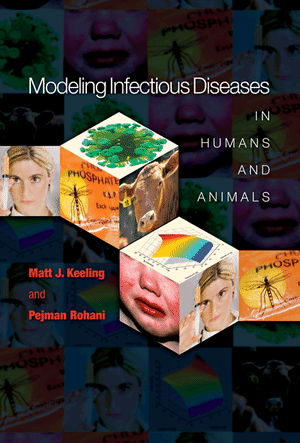Although the SIR and SEIR
model
paradigms are a good approximation to the epidemiological
characteristics of many infectious diseases, such as measles or
influenza, other infections have a more complex natural history. As an
example of how such complexities can be accommodated in the model, will
we consider infections such as hepatitis B, herpes, or chickenpox,
where a proportion of infected individuals may become chronic carriers,
transmitting infection at a low rate for many years.
For diseases with carrier
states, susceptible individuals can be infected by either carriers or
acutely infectious individuals. It is generally assumed that the
progress of infection within an individual is independent of their
source of infection; that is, those infected by acutely infectious
individuals and those infected by carriers are indistinguishable. A
recently infected individual is acutely (highly) infectious for a given
period and then either recovers completely or moves into the carrier
class. Such dynamics lead to the following model:


